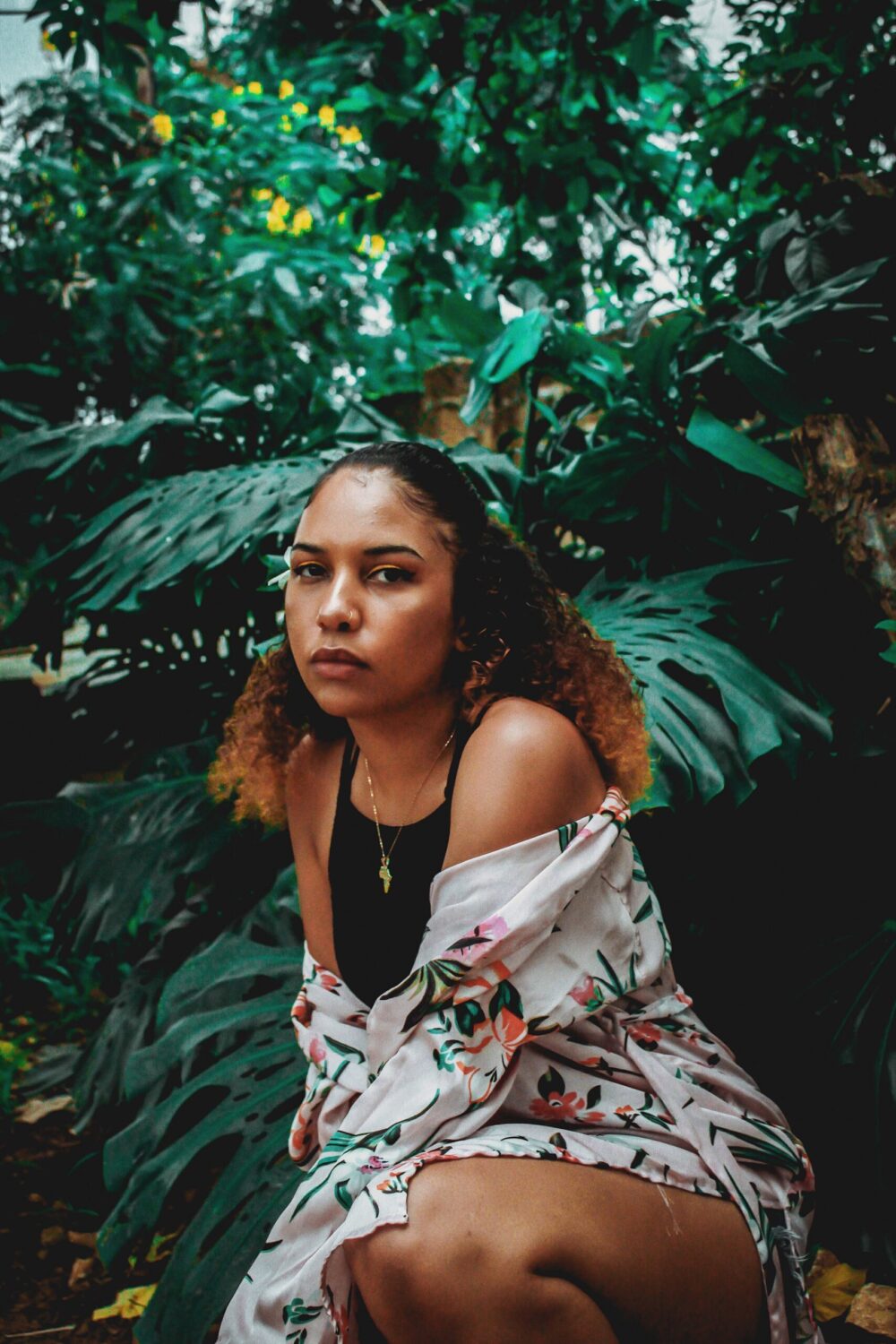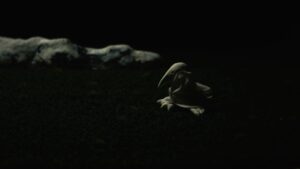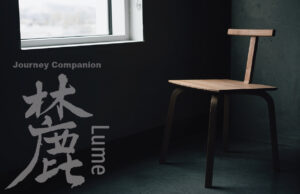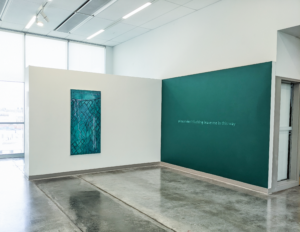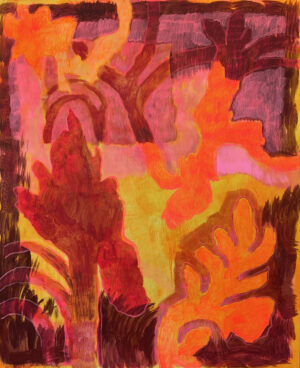Exploring Concepts Through Painting
Mwaba Marie Chandia
Award Recipient
ECU Graduation Awards for Anti-Racism and Social Justice – Visual Arts – Honourable Mention
“Where the Weird Things Are”
This series of acrylic paintings is a contemporary, afro-futuristic approach to portraiture which springs from my interest in further exploring the interconnected relationship between nature & people. This developed from an already existing series of mine titled ‘Cabinet of Curiosities’, which also explores issues of display & repatriation. Essentially, the purpose of this body of work is to reimagine what the future might look like within an African context where women, insects and plants are at the focal point. The concept highlights the close relationship indigenous people of Africa have always had with the earth/nature in the past and still maintain today throughout the continent. Additionally, my interest in combining different living things to create new, bizarre beings springs from watching my parents use somewhat unorthodox objects in their own artistic practices throughout my childhood in Zambia. I grew up watching them use objects like animal bones, seed pods, shedded snake skin, flattened chameleons, beeswax and many other peculiar things, to create the most incredible works and so to have developed that same interest within my own practice has added a richness that I hope reflects in the work.
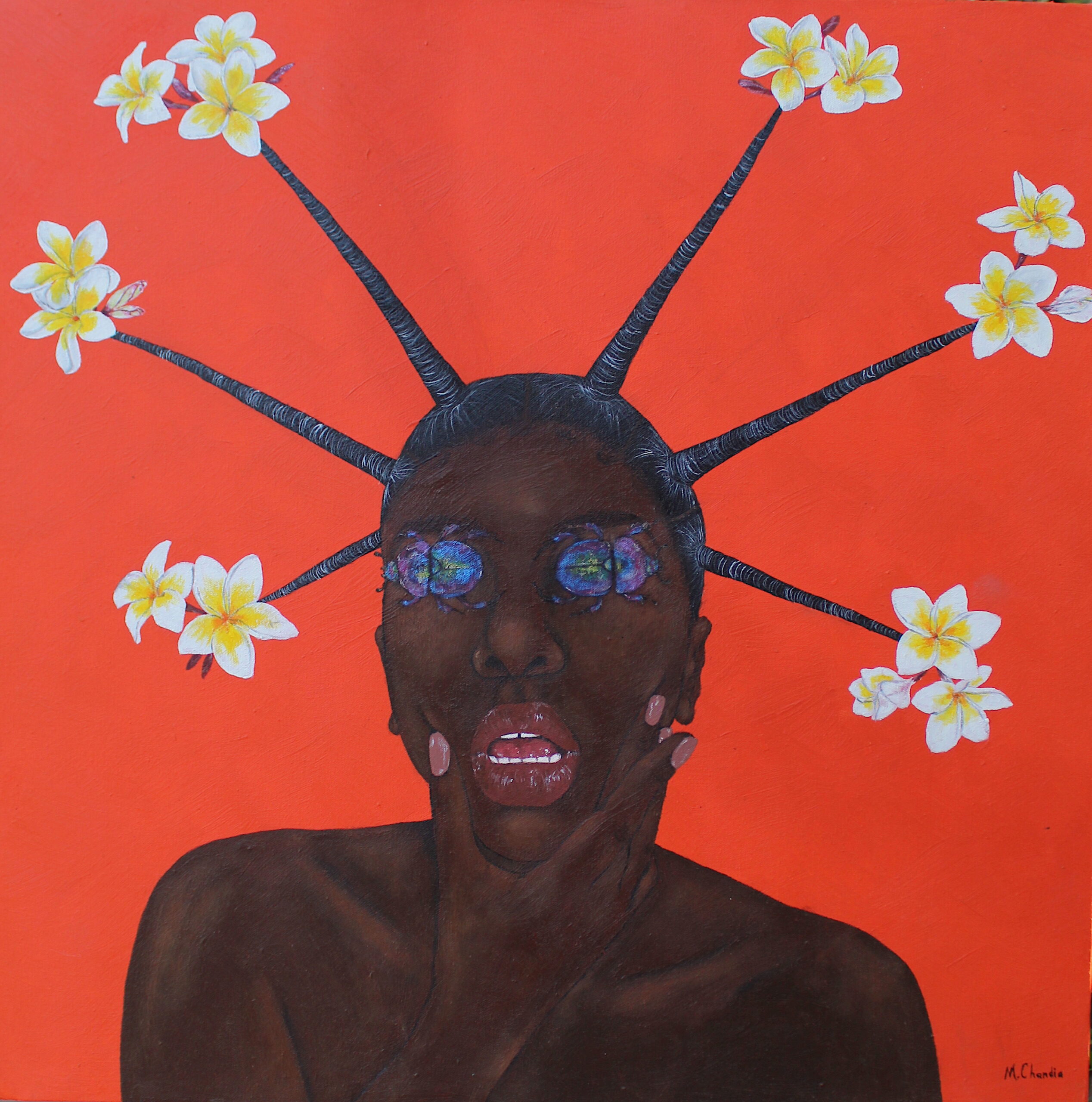
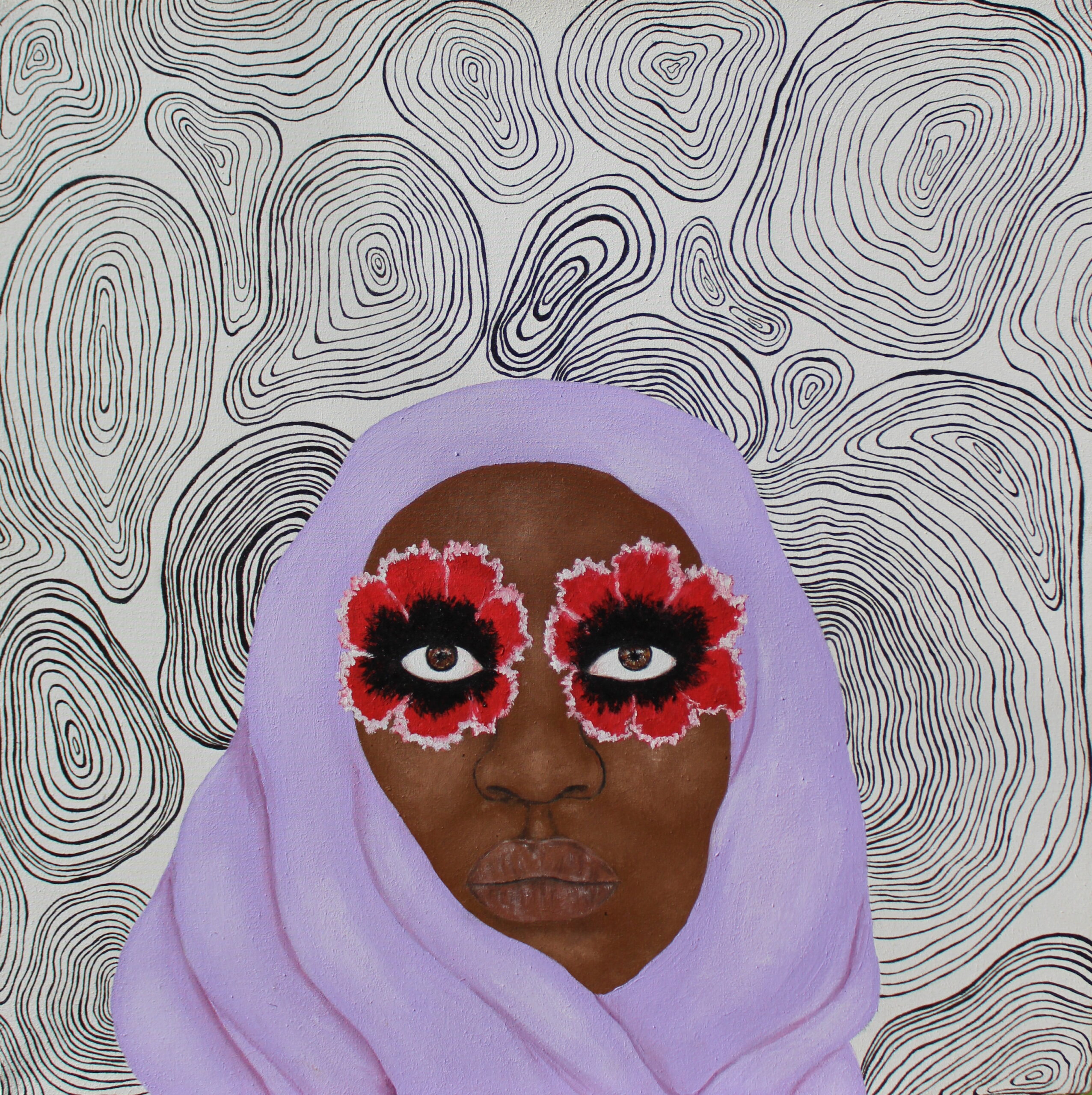
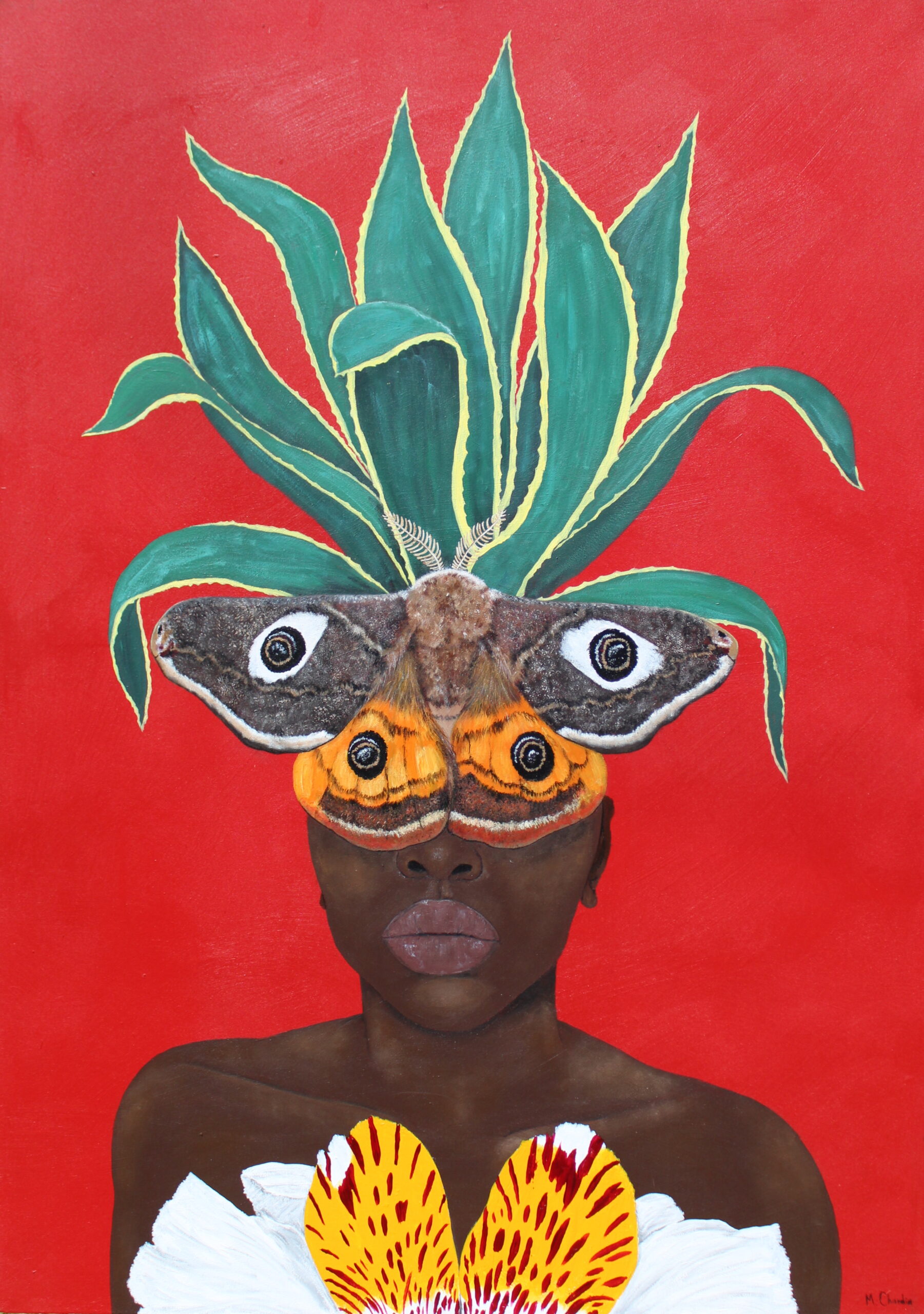
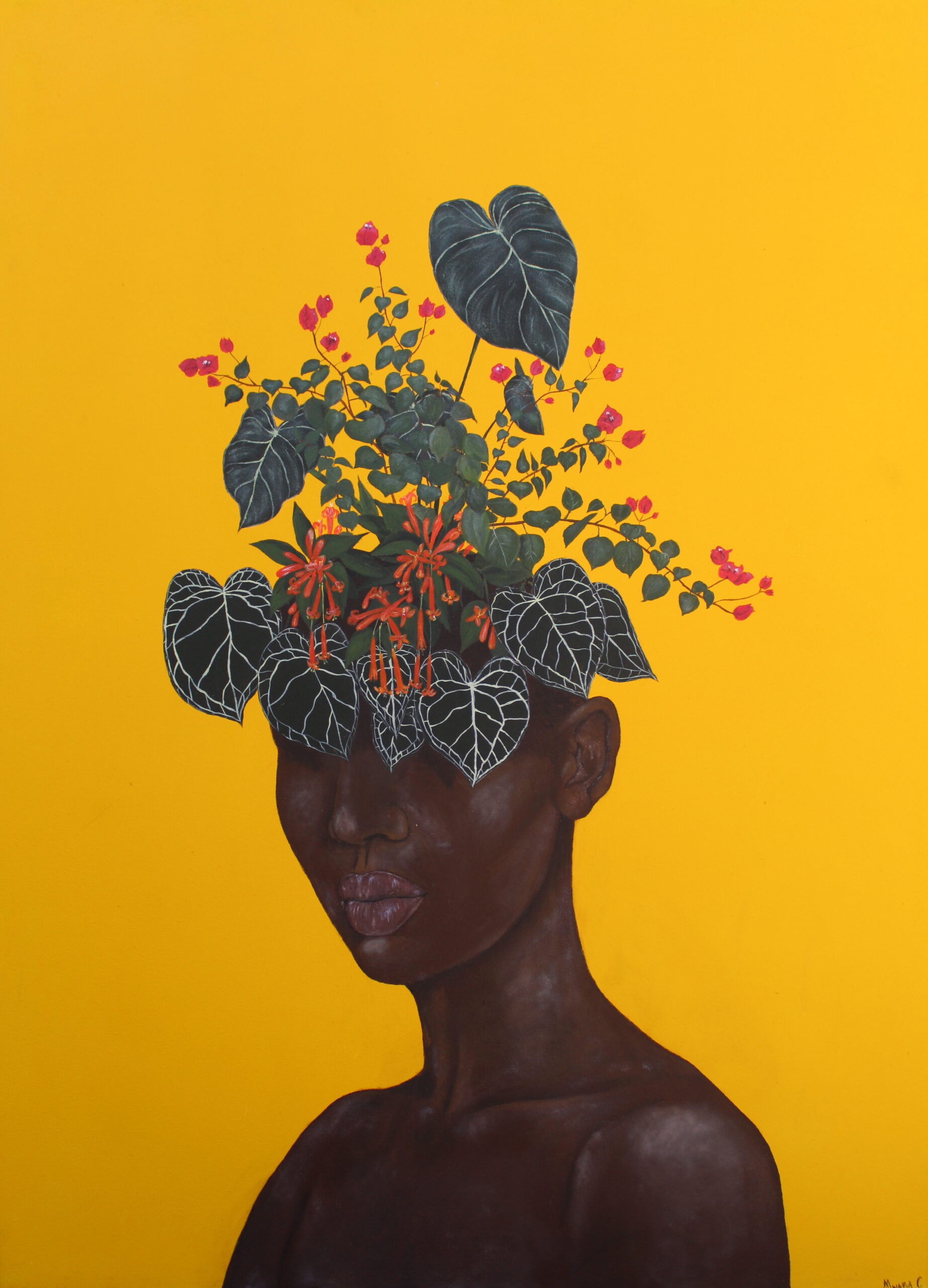
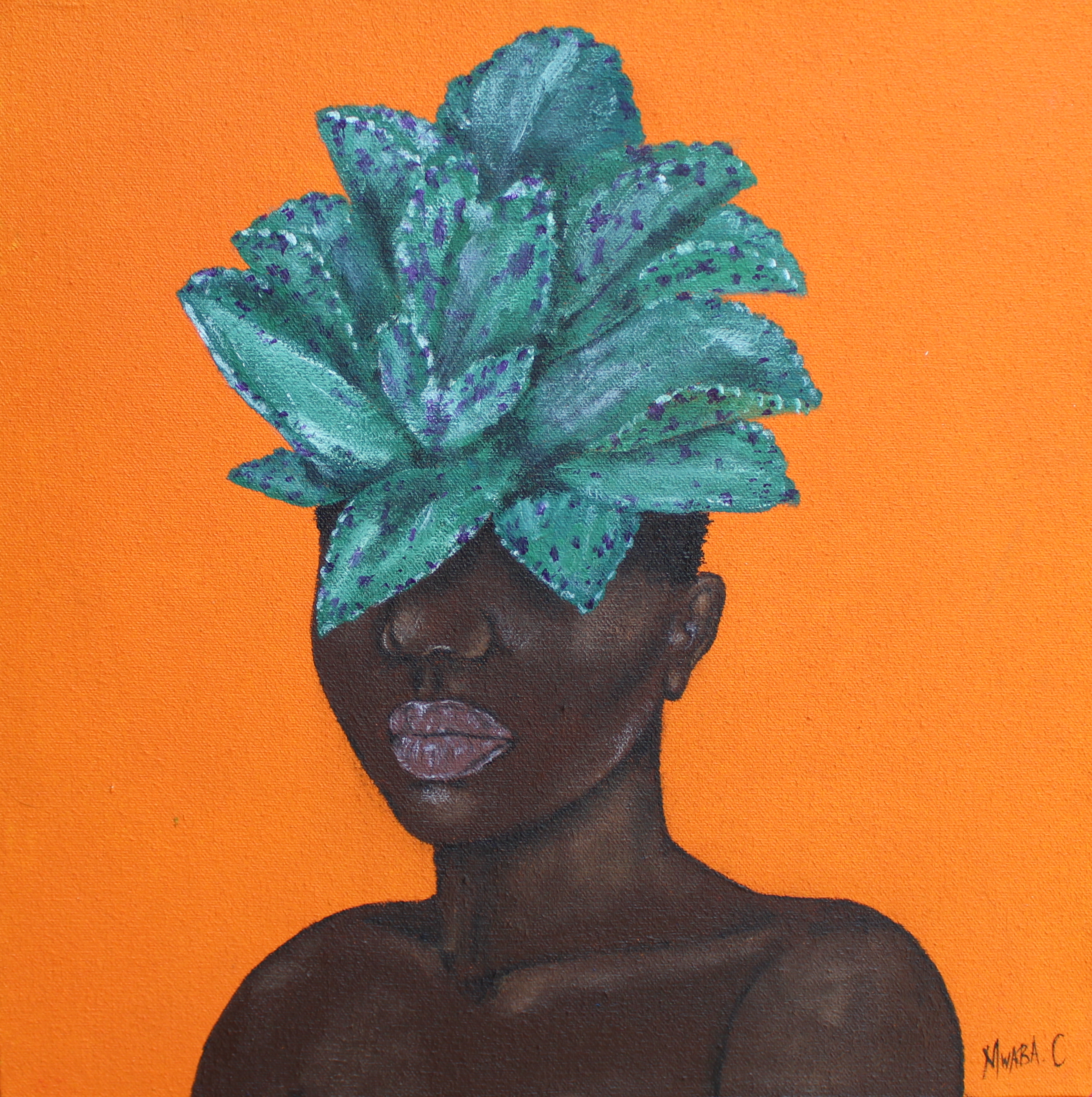
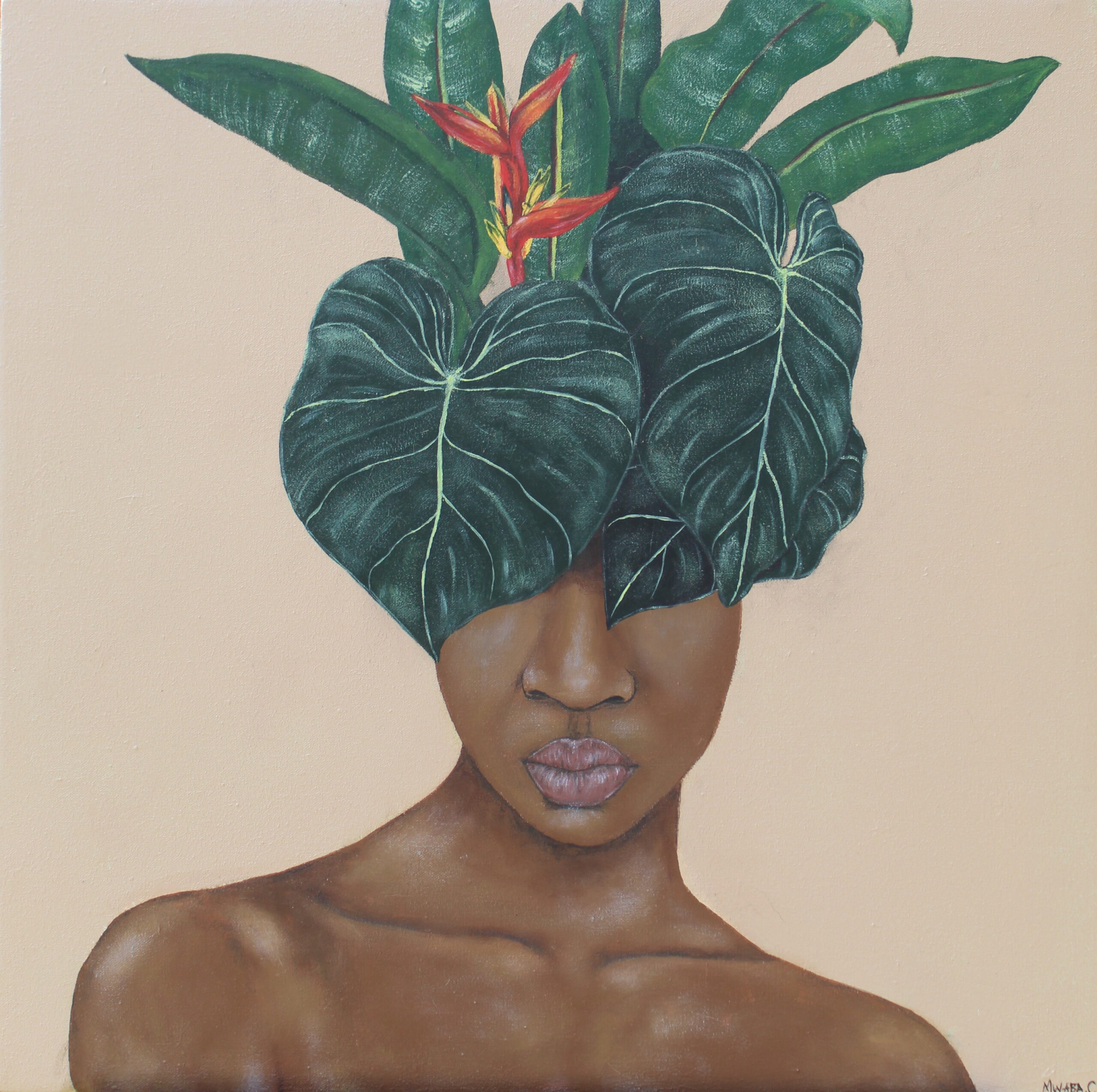
My ‘Cabinet of Curiosities’ series explores ideas surrounding representation of black bodies as well as the notion of ‘display’ in relation to the importance of repatriation of cultural objects/history. As an African artist existing in a post-colonial country, I feel that contributing to new ways of storytelling & recording history through art is an incredibly important response to repatriation for those of us who are somewhat powerless in the matter. Additionally, I feel that artists play an important role in this discussion because they have the ability to contribute to the preservation of culture as well as add on to future generation’s artistic heritage.
My choice to merge the human form with plants is an attempt to dehumanize the subject as well as deconstruct the viewer’s idea of classic portraiture while hinting at underlying themes of erasure and lack of identity. These ideas are meant to evoke a discourse about museums and their display of cultural objects/art as well as challenge the viewer to begin thinking about the ways in which we both view and display black bodies today in fashion, on social media etc. Additionally, my choice to display the human figure is meant to highlight the symbiotic relationship between cultural objects and the people/culture in which they function.
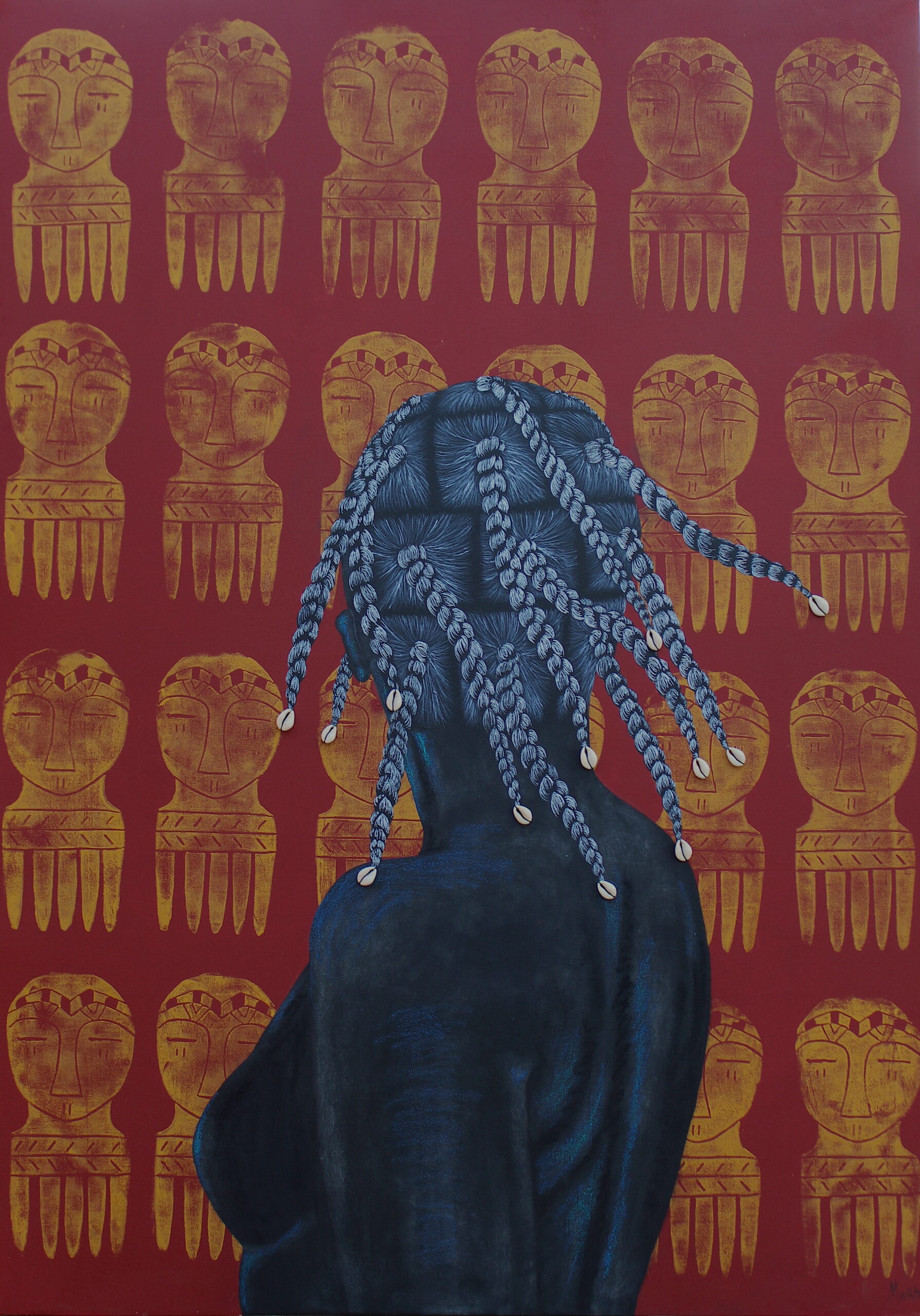
My “Patterns” series is a celebration of women and my cultural heritage, hence the works are characterized by bright colors and patterns that represent Chitenge fabric, an important part of Zambian culture. The other important aspect of this series is the focus on traditional hairstyles as well as the female form.
